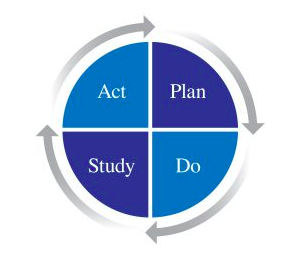Most of our energy this school has been focused from necessity on the Plan, Do portions of the cycle. Seize the opportunity in 2020 to learn from your innovations by making sure to complete the Study Act part of the cycle.
Using PDSA cycles does not need to be complex. Yet, the learning from using them to assess innovations in our schools and classrooms is complex. Now is the time to use this learning to move into the future even more focused on increasing equity and ensuring that all of our learners have the conditions to joyfully learn and flourish in their schooling environments.
Part 1: Get Started by Doing a PDSA!
Watch this short video here to learn more about PDSA’s.
Make a copy and use this template to plan your PDSA. This template can be used for the classroom, grade level, school etc. Use the template as the planning tool to help you learn from your innovation (often called a ‘change idea’). Note on the template what you will do, how you will measure the result, what you learned from the results, and if you will adapt, or abondonden the change. It is that simple!
Part 2: Deepen Learning with a Practical Measures
A practical measurement can provide a roadmap to Study in a Plan, Do, Study, Act cycle. In order to accelerate your learning, you need a way to measure what you are trying to do in order to evaluate the effectiveness of your change. This is what practical measures allow us to do.
Practical measurements should be:
1. easy to use (process should not be complicated)
2. directly aligned with measuring what we are trying to do
3. provide insightful data that shows the evidence of what we were trying to change
The process does not need to be complex, but rather the process should allow for complex learning. You can note a practical measurement in the Plan section of the template.
Additional tools to accelerate your learning and lift up student voice:
Use this practical measurement tool to gain insight from the most important people in schools, the students. We often forget to ask students about how they are learning and what part of the instructional design is working for them. The events of this school year give us an opportunity to shift this and glean all we can from their magnificent insights.
Even more ways to use practical measures:
To find more ways to use practical data and/or have the data organized in a beautiful dashboard, contact CLEE Data Systems Leader, Joel Stewart at joelstewart@clee-ri.org.
Part 3: Deepen Commitment to Action With Data
This section will help you engage colleagues in studying the practical measures data you collected to choose clear Action in a Plan, Do, Study, Act cycle.
Use a collaborative data analysis protocol, like the Atlas protocol (see CLEE’s virtual and 30 minute version) to help teams expand thinking using data in order to determine the best next steps to impact student learning. To learn more, check out this short video: What Do You See in These Data?
A team determines if they want to Adapt,Adopt, or Abandon their change idea based on the results of the data. Then, they begin the process again with a new PDSA cycle. The culmination of focused improvement with measuring results allows us to learn fast, fail fast, and improve quickly (Carnegie, 2020). The only true failure is if we don’t learn from our implementation. Want to build your team’s facilitative leadership skills to continuously improve? Reach out to michelleli@clee-ri.orgto learn more about how CLEE can support your learning organization.
